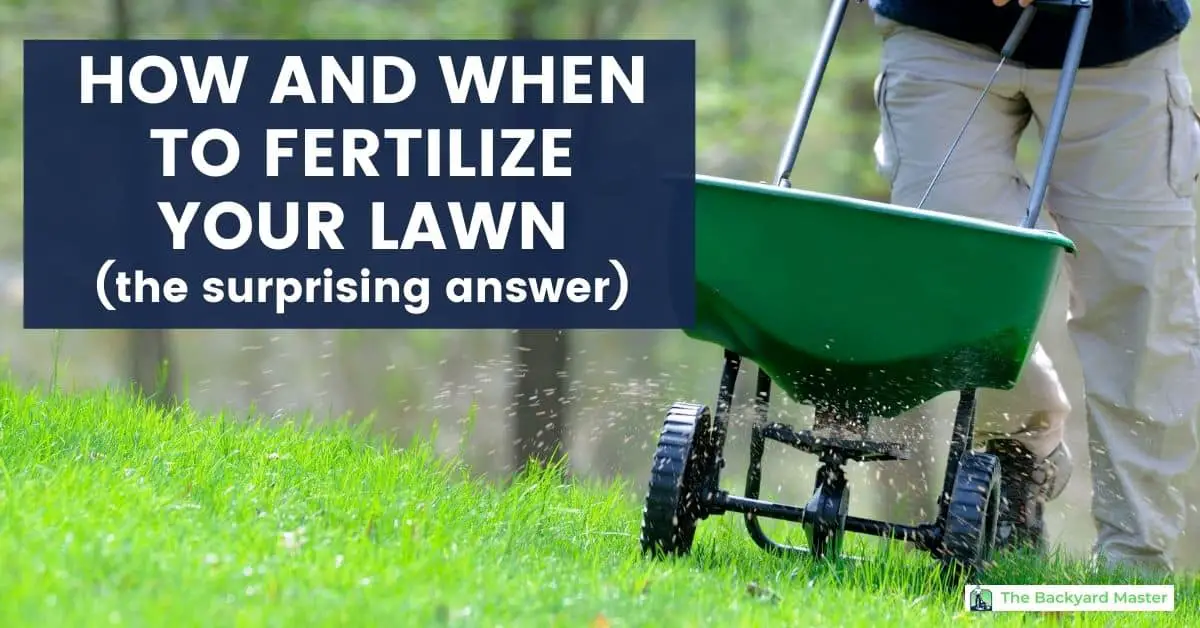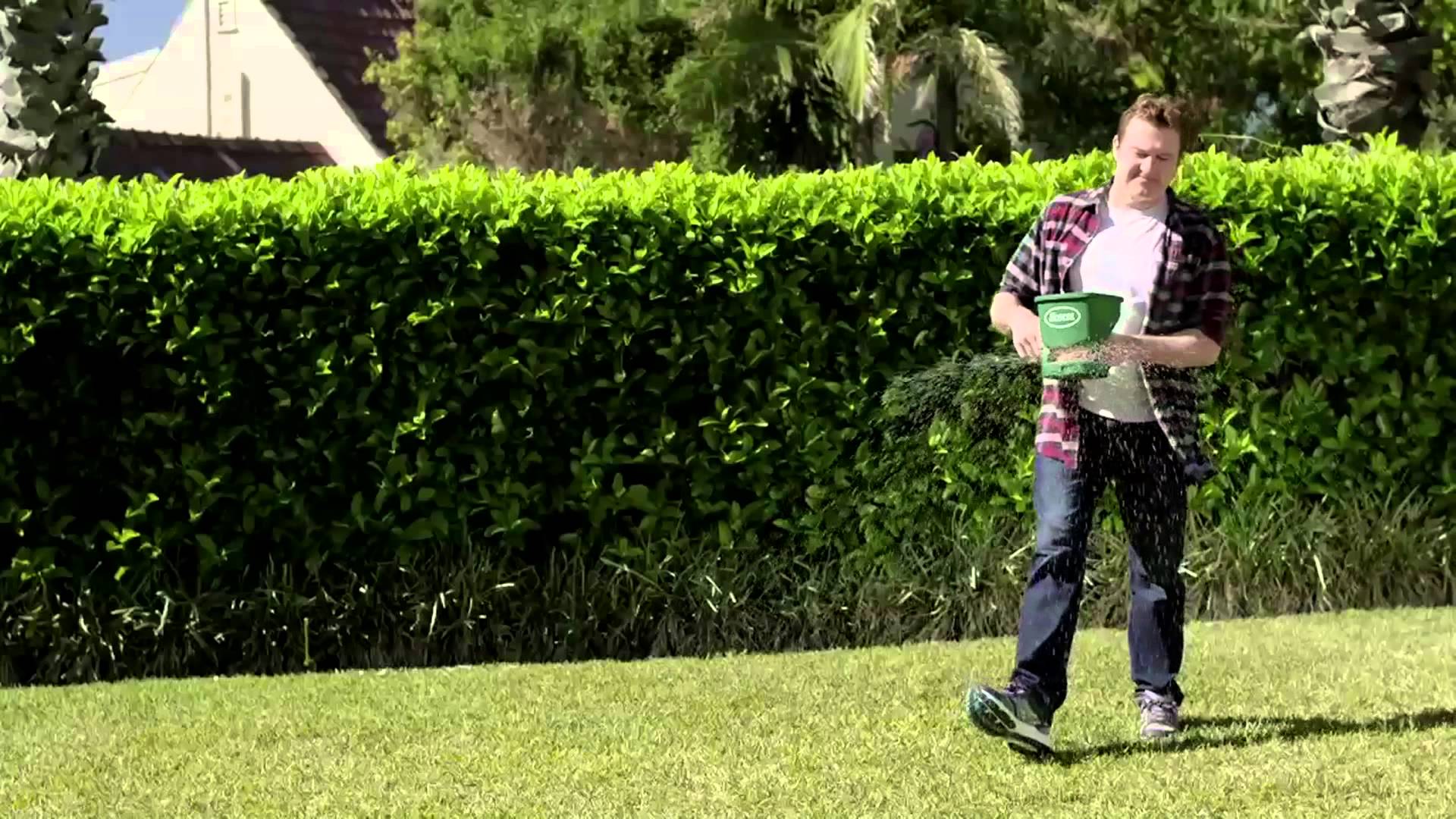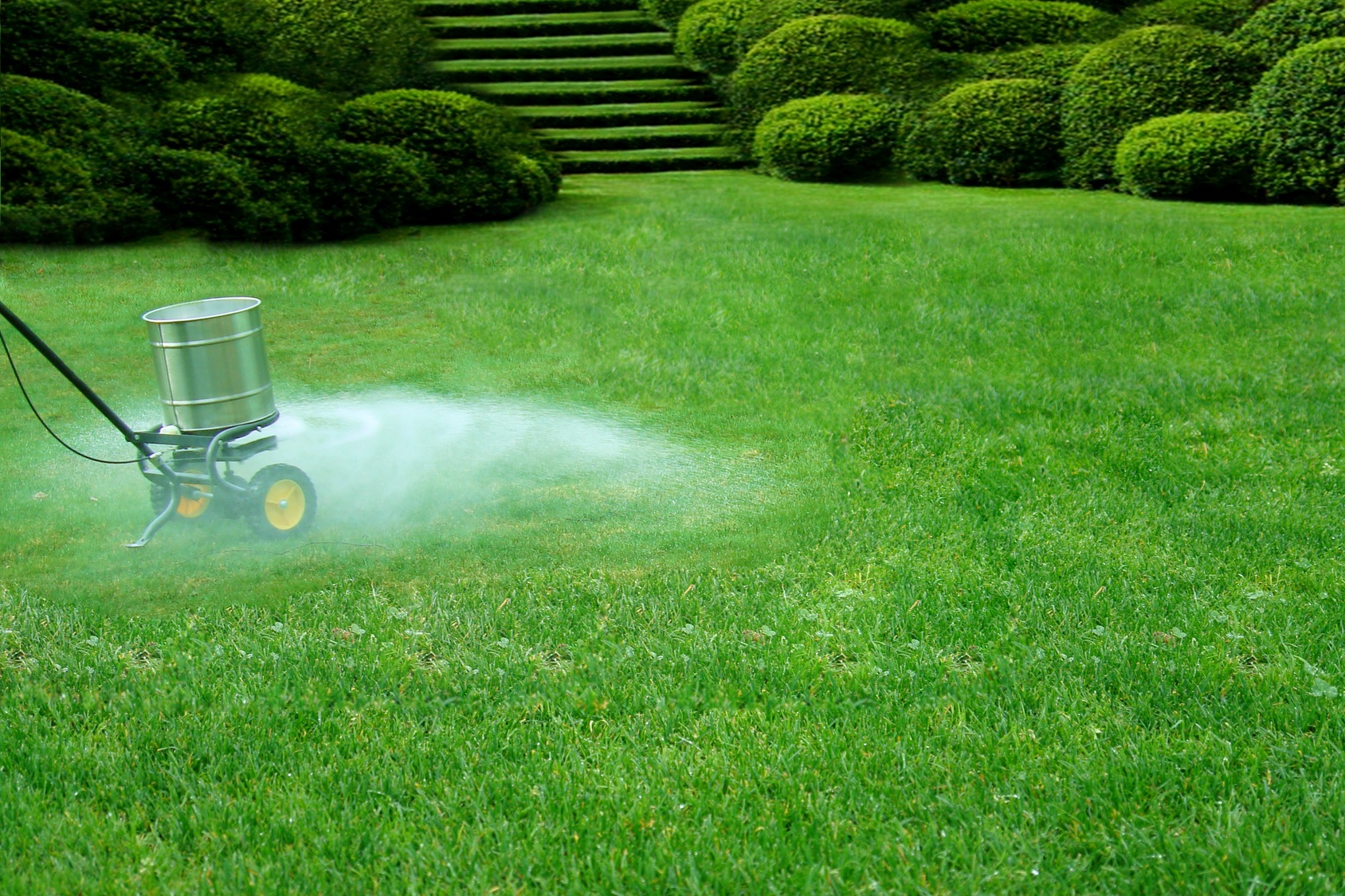What Type Of Fertilizer To Use On Your Lawn
When picking fertilizers for your lawn, you have the option of liquid or granular, and synthetic or organic.
- Liquid: Fast and effective, but tough to spread and used mostly by professionals, may require the use of a backpack sprayer for large areas.
- Granular: Easiest to spread, the best option for home gardening.
- Synthetic: Made out of synthetic components, release their nutrition fast.
- Organic: Organic fertilizers for lawns are made from plants and animals, and are usually of the slow-release type. This means their effect will last longer.
Time To Fertilize Your Lawn
- Fall is the best time to fertilize your lawn.
now
Lets compare fertilizing lawns in April versus now. After we fertilize our lawns in April, we feel rewarded when the grass greens up. But this boost of new grass blades comes at the expense of a deeper root system. You have to mow your lawn more often, and your turf may become more vulnerable to drought stress in summer.
In contrast, fertilizing in fall will:
- Repair any damage that occurred to the lawn over summer.
- Lead to a thicker turf and a stronger root system this fall.
- Help the turf to tolerate stresses such as drought, diseases and winter.
- Lead to a quicker green-up next spring.
What are you waiting for? Lets get busy!
The Basics Of Lawn Fertilizer
Get to know what those three numbers on the label of the bag mean. These numbers are the percentage of nitrogen, phosphate, and potassium in that order. they are the primary nutrients that feed your lawn and different brands provide varying amounts. So a bag of 12-12-12 will have 12 percent nitrogen, 12 percent phosphate, and 12 percent potassium, these are the major nutrients that your lawn needs. But just as important are the micro-nutrients that lawn fertilizer manufacturers add to the mixture.
Most commercially available lawn fertilizer is a blend of both primary, or major nutrients and micro-nutrients customized for common lawn grasses like bluegrass, fescue and ryegrass. Depending on your location you might even have a lawn using zoysia or bentgrass, and there are blends designed just for those grasses.
Read Also: How To Price A Lawn Mowing Job
Can I Fertilize My Lawn Once A Month
Because nitrogen in slow-release fertilizers is available over time, the product can be applied less frequently and at higher rates and is less likely to burn the lawn. You can reapply slow-release fertilizers every six to eight weeks, while a fast-release fertilizer can be reapplied every four weeks.
The best time to apply a winterizer is after the grass stops growing in the fall, while it is still green on top and active below the surface. In most parts of the North, this will be sometime in mid-late November, or even early December.
Fertilizer : The Why What How And When To Fertilize Your Lawn

Few words strike fear into the heart of the average homeowner more than fertilizer. With complex terminology and numerous options, it is easy to see how someone can get overwhelmed. Learning the answers to some of the most common fertilizer questions will arm you with the knowledge you need to fertilize your lawn like a pro.
Why should I fertilize my lawn?There are several reasons why you would need to fertilize your lawn. Over time, many lawns will leech nutrients out of their soil. Most nutrients for your lawn are water-soluble. Over time, whether through rain or irrigation, the water will carry these nutrients out of your lawn. This will leave your lawn nutrient deficient, which will leave you with an unhealthy lawn susceptible to disease. In some instances, the soil that the grass is growing in does not have the naturally occurring nutrients that turf needs to grow. If this is the case, fertilizer will be needed in order to maintain a healthy lawn. To determine whether or not your soil is nutrient deficient, you can purchase a soil test kit to learn more about the soil composition. The results of this test will help you determine exactly what type of fertilizer that your lawn needs.
Nitrogen promotes healthy leaf growth by encouraging the production of chlorophyll, which is a chemical vital to photosynthesis.
Phosphorus helps your lawn develop healthy roots and stems.
Potassium gives your lawn strength, helping it to resist drought and disease.
Read Also: How To Dispose Of Gas Trimmer
The Best Fertilizer For Lawns
There are a variety of different fertilizer formulations available on the market, so be sure to read the label carefully to make sure you are getting the right nutrients for your lawn. Some fertilizers also include herbicides or pesticides, which can be helpful in controlling weed and pest problems. However, its important to remember that over-fertilization can also be harmful to your lawn, so always follow the directions on the package carefully.
There are a lot of types of fertilizer for lawns that you can choose from, but not all fertilizers are created equal. Some fertilizers have a short life span and some last for years. The best fertilizer for lawns is one that will last the longest and ensure that your lawn gets the nutrients it needs to grow. In addition to this, it should also be able to keep your grass healthy and green while keeping pests away. Also, the fertilizer for your lawn is one that contains slow-release nitrogen so it can be absorbed slowly by the grassroots without harming them in the process.
When To Fertilize Your Lawn: Timing And Frequency
Choosing the correct time and schedule to fertilize your lawn is essential to a beautiful yard. Here are the best tips on how to get your lawn in its best shape this year.
Lawn fertilizer is like food for your grass, providing it with the nutrients it needs to grow and maintain its healthy, green glow. Each fertilizer uses a unique combination of nutrients, though most include nitrogen, phosphorus, and potassium. These ingredients create a vibrant lawn that resists weeds like crabgrass while creating an optimal environment for good microorganisms and worms.
While its important to fertilize your lawn, throwing down these nutrients at any time of the season wont help your grass reach its full potential. Instead, its important to consider your grass type and the environment you live in before deciding on a time to fertilize. Read on to learn more about the best time to fertilize your lawn, how often you should do it, and the factors that impact growth.
You May Like: Lowes Commercial Lawn Mowers
When To Fertilize Lawn
Knowing when to fertilize your lawn depends on how often you plan to apply it. If you fertilize once a year, do it around Labor Day thats when lawns absorb the most nutrients. For biannual fertilizing, add a second application the middle of October.
There are exceptions to this timeline depending on climate and soil types, so adjust if your lawn is not retaining enough nutrients. In the spring, if you feel the need, spread a little fertilizer to help the greening process.
Whats The Difference Between Turf Builder And Fertilizer
Turf Builder is only a brand name of a fertilizer that is manufactured by Scotts Company. Though considered a miracle fertilizer, Turf Builder is a synthetic fertilizer that could harm the soil. So if you are considering the health of the soil, then it is better to go for natural options such as manure.
Recommended Reading: 42 Inch Zero Turn Mower Lowes
Examples To Understand Fertilizer Application Rates
Lets look at an example to figure out how we answer how much of this stuff do I put down, to get me 1 pound of nitrogen per 1000 square feet?:
If you have a balanced fertilizer with numbers 10-10-10, that means that bag of fertilizer contains 10% Nitrogen, 10% Phosphorus, and 10% Potassium. Thats right, those numbers on the bag of fertilizer are percentages of macro nutrients N, P, K.
Check out this link for a full explanation of N P K.
But for now, all you need to know is Nitrogen is going to help us answer our question: How much of this stuff do I put down, to get me 1 pound of nitrogen per 1000 square feet?
It comes down to this simple equation:
Preferred pounds of nitrogen per 1000 square feet / Percent of Nitrogen in the bag = Pounds per 1000 square feet of application.
We know that our preferred pounds of nitrogen per 1000 square feet is 1.
We know that the numbers 10-10-10 are referring to percentages, therefor this bag contains 10% nitrogen .
In this case the numbers look like this:
1 pound / .10 = 10
In this example we need to put down 10 pounds of product per 1000 square feet and that satisfies our 1 pound of nitrogen per 1000 square foot rule.
Lets look at another example: In this case lets take a bag that is made up of 15-6-0. This means there is 15% nitrogen.
1/.15= 6.6
You need to apply 6.6 pounds of this product per 1000 square feet. Make it simple and just call it 6 pounds.
Its finally time to open your bag of fertilizer and get ready to pour.
Applying Fertilizer To Your Lawn
Choosing Your Spreader
There are two types of spreaders to choose from to apply your fertilizer, broadcast spreaders and drop spreaders. Broadcast spreaders are what I call no-brainers, they are easier to use, cover a wider area with each pass helping to complete the work faster and theres less of a chance of having skips in your yards caused by not overlapping your passes properly. They also cost less than drop spreaders.
A drop spreader can enable you to apply your fertilizer in windy conditions and apply products close to sensitive plants and areas without spreading the fertilizer where you dont want it to end up. You will need to be more precise when you make your applications and it will take you more time because you will need to make more passes and you should always apply in a criss cross pattern to reduce the chance of missing any spots.
If you prefer a certain brand of lawn fertilizer I highly recommend purchasing a spreader from that same brand. That way the settings the brand recommend on the bag will match the settings on the spreader. Just one way to take some of the guess work out of getting the right amount of fertilizer on your lawn.
Setting the Spreader
Cover the perimeter of the yard first, then fill in the middle.
Read Also: How Do I Know If My Grass Is Dead
How To Test How Much Water Your Lawn Needs
While the ideal watering amount is one inch per week , it is best to check the terrain for water absorption.
Grass with healthy root systems run around six inches deep.
In order to make sure that the lawn has enough water to penetrate the six inches of soil, and moisten the entire root system, do this simple test:
Once you know how long it takes for the water to penetrate six inches below ground, that should be the mark time for water.
Know Your Type Of Grass

Each type of grass will call for particular fertilizing schedules.
Therefore, it is ideal to time fertilizing so that it coincides with the time period just before peak growing phases of the lawn.
Depending on your type of grass this could either be during the warm season or cold season.
Warm season grasses: are served best when fertilized in late spring and early summer.
Cold season grasses: are best served being fertilized once a year in the fall.
Don’t Miss: Smallest Riding Mower
Determining The Best Times To Fertilize
Homeowners who prefer organic fertilizing methods might do a single “turf-builder” application in the early fall to build root systems. In the spring and summer, most may omit all fertilizers and rely on the nitrogen from mulched grass clippings to feed their lawn.
Homeowners using traditional fertilizer might want to apply two or three light applications per growing yearone in the spring, one at midsummer in regions where it is necessary, and one “turf-builder” application in the early fall.
The actual timing depends on your region and the type of turf grasses you have. For information on the best recommendations for your area, contact an expert at a local garden center or reach out to the nearest cooperative extension office.
Once you have figured out the best time, try to plan the fertilizer application with a short period of rainfall. If not, when you apply the fertilizer, you will need to supply your lawn with at least a quarter-inch of water. However, do not apply fertilizer before a massive storm. A rainstorm increases the risk of fertilizer nutrients flowing into storm drains and streams.
Can You Fertilise Lawn In Winter
There are benefits to fertilising your lawn during winter, but it isnt the same fertiliser that you would use during the months of the year where your lawn is actively growing. Once soil temperatures drop below 14 degrees Celsius your grass will start to slow down and go semi-dormant for the cool months ahead.
You May Like: Riding Lawn Mower Scrap Value
How Soon You Can Fertilize After Seeding Your Lawn
Its not always after seeding that you should apply fertilizerthe best time to fertilize is right before or during the seeding process. Use a starter fertilizer with quick-release nitrogen since that will give the seeds a nutritional boost. When you make fertilizer a part of the seeding process, your grass will grow quicker and is more likely to end up healthy and lush.
Tips For Watering Your Lawn The Right Way13 Photos
Learn the ins and outs of lawn irrigation, including expert tips for efficient watering.
A day or two before applying fertilizer, water your lawn thoroughly. After grass dries, apply fertilizer. Then lightly water again. This second watering is vitally important, because it washes fertilizer off grass blades and into soil. You can also time fertilizer application between rainfalls to let rain wash fertilizer into soil. Just be sure you don’t fertilize before a downpour, or you may wind up with fertilizer washing away, especially if your lawn slopes. Avoid applying fertilizer during a drought when a lawn has browned or withered from lack of moisture.
You May Like: Trucomplete Lawn Service
What You Need To Know About Fertilizing
Fertilizing is a process that involves the application of plant nutrients to the soil in order to increase yield, improve plant quality, and improve soil health. Fertilize your plants correctly and you will get better yields, better quality fruits and vegetables, and healthier soil.
Fertilizer is a material that is used in the production of plants or crops. It is an important part of agriculture, as it helps plants to grow better and faster. Fertilizers contain nitrogen, phosphorus, and potassium which are three essential nutrients for plant growth. They also help in improving soil quality and preventing soil erosion. Fertilizers are usually produced using natural substances like animal waste and plant materials such as wood chips or sawdust.
Fertilizing your lawn is an important part of keeping it healthy and looking great. But how do you know when and how much to fertilize? Below are some tips to help you get started.
- First, you need to figure out what type of fertilizer is best for your lawn. There are three main types: nitrogen, phosphorus, and potassium . Nitrogen is responsible for greening up your lawn, phosphorus helps with root growth, and potassium strengthens plants against disease and pests.
- Not all fertilizer is created equal. Make sure you are using a fertilizer that is specifically for lawns.
Choose Your Method Of Fertilization
There are different methods for fertilization.
When fertilizing rotary spreaders, drop spreaders, and handheld spreaders are all used to distribute the fertilizer evenly over the lawn.
The kind of spreader used will depend mostly on the area being fertilized. You will want to pick a spreader that correlates with the size of your yard.
You May Like: Too Much Humic Acid On Lawn
Wait Before You Fertilize Do This:
If hiring lawn care services are not in your budget, make sure you use granular fertilizer. Granular fertilizer is the easiest way to get an even spread, without utilizing a professional fertilization method.
Do a soil test. You want your soil to be as neutral as possible. Aim for a pH of 6.0-7.0, for most grasses. Adding too much or too little of a particular nutrient can be devastating to your lawns balance.
Pay attention to other plants in your landscape design. What works for your lawn may be dangerous for your garden. Know what is growing in your yard and, if necessary, isolate certain plants from your fertilizer treatment.
Fertilizing Cool Season Grasses

Cool-season grasses can grow across three seasons, late fall, spring, and sometimes winter. As a result, you might need to fertilize your cool-season grass lawn up to three times per year.
However, most lawns will become completely dormant in the winter, especially if you live somewhere with relatively harsh winters .
For most lawns with cool-season grass, plan to fertilize your lawn in the fall and spring.
If you notice that your lawn continues to grow in the winter, adjust and fertilize it three times per year twice in the fall and one in the spring.
Fall months will be when grassroots intake the most nutrients to prepare for winter, so the lawn only needs a light application of fertilizer in the spring.
Read Also: How To Mow Lines
